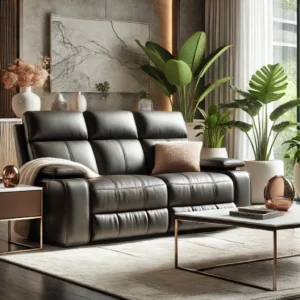 When shopping for a sofa, most of us focus on the design, color, and price. But have you ever considered how a sofa impacts your comfort and health? Sofa ergonomics—a blend of science and design—plays a crucial role in ensuring your sofa supports your body in the right way, preventing discomfort and long-term health issues. Whether you’re spending hours binge-watching your favorite show, reading a book, or entertaining guests, choosing an ergonomic sofa can make all the difference.
When shopping for a sofa, most of us focus on the design, color, and price. But have you ever considered how a sofa impacts your comfort and health? Sofa ergonomics—a blend of science and design—plays a crucial role in ensuring your sofa supports your body in the right way, preventing discomfort and long-term health issues. Whether you’re spending hours binge-watching your favorite show, reading a book, or entertaining guests, choosing an ergonomic sofa can make all the difference.
Here’s a detailed guide to help you pick a sofa that’s both comfortable and healthy for your body
1. Why Ergonomics Matter in Sofa Design
Ergonomics is the study of designing furniture and tools to fit the human body effectively. A poorly designed sofa can lead to
- Back pain: Insufficient lumbar support can strain your lower back.
- Neck stiffness: Incorrect seat depth or height can force your neck into awkward positions.
- Posture problems: Slouching on a poorly designed sofa can cause long-term posture issues.
Investing in an ergonomic sofa ensures your body is properly aligned, reducing the risk of discomfort or health problems.
2. Key Features of an Ergonomic Sofa
a. Seat Depth
- Ideal seat depth: 18-22 inches for most people.
- A good sofa should allow you to sit comfortably with your back supported and feet flat on the ground.
- For taller individuals, look for deeper seats; shorter people may prefer shallow seats.
b. Seat Height
- The seat height should be 15-18 inches from the floor.
- This ensures your knees are at a 90-degree angle when seated, reducing strain on your legs.
c. Backrest Support
- The backrest should follow the natural curve of your spine, offering adequate lumbar support.
- A slightly reclined angle of 100-110 degrees is ideal for comfort and posture.
d. Cushion Firmness
- Avoid overly soft cushions that make you sink in, as they can strain your back.
- Opt for medium-firm cushions for a balance of comfort and support.
e. Armrest Position
- Armrests should be at a height that allows your shoulders to relax.
- Ideally, they should align with your elbows when your arms are resting.

3. Material Matters
a. Upholstery
- Choose breathable fabrics like cotton or linen for hot climates.
- Opt for leather or microfiber for durability and easy cleaning.
- Hypoallergenic materials can prevent allergies if you have sensitivities.
b. Cushioning
- Memory foam or high-density foam cushions provide better support and durability.
- Feather-filled cushions are softer but may lack long-term support.
c. Frame Quality
- A hardwood frame (like oak or beech) ensures longevity.
- Avoid particle board or plastic frames that may not provide adequate support
- .

4. Test Before You Buy
Before purchasing a sofa, try it out in-store if possible. Here’s how to test:
- Sit down and lean back: Check if your lower back is supported.
- Place your feet on the ground: Ensure they rest flat with knees at a right angle.
- Check armrest height: Are your shoulders relaxed when using the armrests

5. Additional Ergonomic Enhancements
a. Use Pillows
- Add lumbar support pillows to enhance back support.
- Neck pillows can help maintain proper alignment while resting.
b. Adjustable Features
- Reclining sofas or modular designs let you adjust the seating to fit your comfort.
c. Footrests
- An ottoman or built-in footrest can help improve circulation and relaxation.
6. Consider Your Lifestyle
- Frequent users: If you spend hours on your sofa, prioritize comfort and durability.
- Families with kids: Look for stain-resistant fabrics and sturdy designs.
- Home office users: If you occasionally work on your sofa, ensure it supports an upright posture.
7. Long-Term Benefits of an Ergonomic Sofa
- Improved posture.
- Reduced back, neck, and shoulder pain.
- Enhanced relaxation and comfort.
- Better overall health and fewer visits to the chiropractor!

8. Budget-Friendly Tips
You don’t need to spend a fortune to find an ergonomic sofa. Here’s how:
- Look for sales or discounts on high-quality brands.
- Choose local manufacturers for custom designs at lower prices.
- Add ergonomic accessories like cushions and footrests to an existing sofa.
Conclusion
Choosing an ergonomic sofa isn’t just about aesthetics—it’s about investing in your health and comfort. By paying attention to seat depth, backrest support, and material quality, you can find a sofa that suits your body’s needs and your lifestyle. Remember, a well-designed sofa doesn’t just look good; it feels good, too.
Ready to upgrade your living space? Keep these tips in mind and make your next sofa both a stylish and health-conscious choice

Leave a Reply